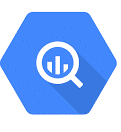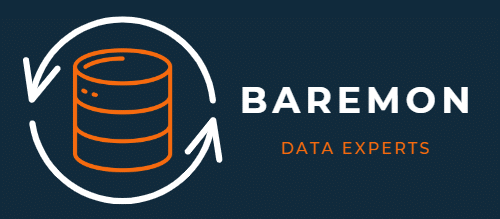When it comes to selecting a data warehouse platform with a strong return on investment (ROI), you often have two choices: Snowflake or BigQuery. These tools have made complex and distributed tasks simple and profound, holding nearly a third of the market share.
We’ll delve into how these platforms are built, how they approach pricing, and explore the features that can enhance your productivity.
Architecture

Snowflake’s architecture separates compute power, data storage, and client services, allowing them to function independently. This design enables faster performance, concurrent tasks, and supports structured and semi-structured data in its storage architecture.
BigQuery vs. Snowflake Pricing
Snowflake and BigQuery have significantly different approaches to pricing their services.

If you run queries sporadically, BigQuery‘s pay-as-you-go model makes sense as you are billed based on the amount of data scanned by a query.
Alternatively, there is a flat rate option that can be negotiated for more consistent usage patterns.

In Snowflake, you are charged based on the duration of computation time.
This can be a competitive option if you frequently run small queries, such as streaming video. Snowflake also offers a range of storage options at varying rates, making it a versatile choice for enterprises with diverse storage requirements.
Processing speed

Snowflake is known for its strong performance in handling complex queries involving large amounts of data. This is due to Snowflake’s separation of compute and storage, which allows independent scaling of compute resources regardless of the stored data volume.

On the other hand, BigQuery is optimized for rapidly and efficiently processing large volumes of structured data. It uses a columnar storage format and a massively parallel processing (MPP) engine to accelerate query performance. BigQuery also supports real-time analysis with its streaming ingestion feature, enabling users to analyze data as it is generated.
Query optimization

BigQuery offers various query optimization features, including query plan visualization, query execution statistics, and the ability to set query priorities. It also has a query cache that stores the results of frequently executed queries, reducing data retrieval time. Additionally, BigQuery includes a functionality called resharding, which automatically redistributes data among nodes to achieve load balancing and improve performance.

Snowflake provides an “auto-clustering” feature that organizes data based on usage patterns to enhance query performance. Auto-clustering creates new clusters based on frequently queried columns, reducing the amount of scanned data. Snowflake also offers a query profiling tool to help users identify performance bottlenecks and optimize their queries.
Ease of Use

Snowflake has an intuitive web-based user interface (UI) that allows users to make necessary changes directly from their browser. Additional features like SnowSQL and SnowPipe enhance data management and integration capabilities

BigQuery offers several built-in tools and features, such as the Query Editor and the Data Transfer Service, which simplify data migration and transformation processes. BigQuery’s documentation is comprehensive and accessible, with ample resources available for users of all levels of expertise.
Integrations

Snowflake supports integration with Power BI, Looker, Tableau, Informatica, Talend, and other tools. It also offers native integrations with cloud services like AWS, Azure, and Google Cloud, enabling effortless data movement and processing across various cloud environments.
Scaling
Scalability is a crucial factor when selecting a cloud data warehousing solution as it determines how well a platform can handle growing demands while maintaining performance and cost-effectiveness.

BigQuery scales horizontally, allowing it to handle large and complex queries effortlessly.
Its flat-rate model provides predictable costs for large and consistent workloads, while the on-demand model offers flexibility for dynamic or unpredictable workloads.

Snowflake also scales horizontally by adding more compute resources to the cluster as needed. However, it doesn’t automatically adjust resources, requiring more frequent monitoring and management. This necessitates setting up price alerts to notify you when a budget threshold is met or exceeded, optimizing query performance, and having a clear understanding of the teams and features that contribute most to your Snowflake costs.
Both BigQuery and Snowflake offer excellent scaling potential with their respective pricing models. BigQuery offers simpler scalability, while Snowflake provides greater flexibility
Cloud Cost Management
Both BigQuery and Snowflake offer advanced features and tools to help you effectively manage your cloud spending.

BigQuery tools and features
- BigQuery Console charges users based on the data processed by each query, providing transparency and predictability.
- The Query Explain Tool analyzes query complexity and cost, allowing users to optimize queries for cost-effectiveness.
Reference: https://cloud.google.com/bigquery/docs/query-plan-explanation - Google Cloud’s Cost Management helps track and analyze cloud spending across all Google Cloud services.

Snowflake Tools and Features
- Slot Reservations enable you to reserve resources in advance, ensuring you have the necessary resources when needed.
- Auto-Suspend automatically pauses idle warehouses, minimizing costs associated with idle resources.
- SnowAlert provides a real-time alerting system for data issues, security breaches, and cloud cost anomalies.
- Snowflake Account Usage allows you to view historical data for up to three years, helping you identify trends and patterns in your cloud costs over time.
In addition to the native cost management tools, various third-party tools and services are available to manage costs across Snowflake and Google BigQuery. When selecting the right tool for your business, consider the specific features and requirements that align with your needs.
Final Thoughts
Snowflake and BigQuery are two of the most popular data warehousing solutions.
We have explored their differences in cost, architecture, scaling potential, performance, and ease of use.
The right choice for your business will depend on which solution meets the most relevant requirements for your use case. Both Snowflake and BigQuery are powerful contenders for data warehousing and processing, and their capabilities make them suitable for a variety of applications and services.
If you want a clear, easy-to-understand breakdown of your Snowflake or BigQuery costs and consolidate all your cloud spending in a single place, try Finout and start making smarter cloud spending decisions.

